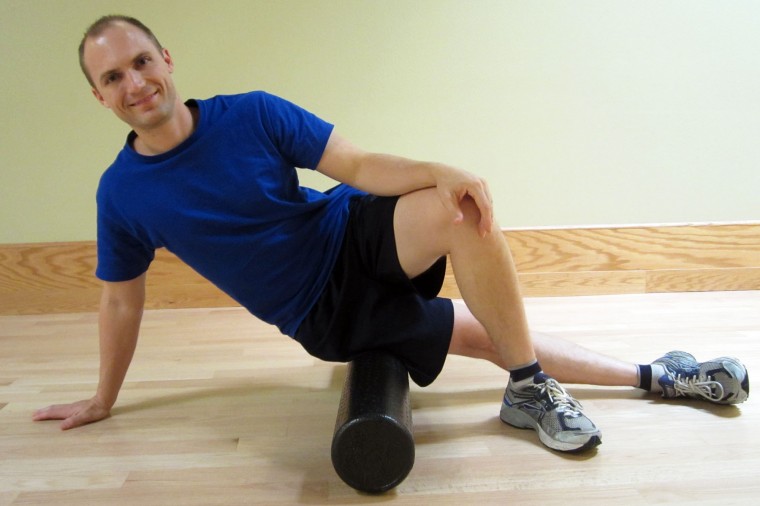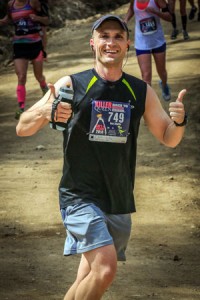Let’s set the stage. Imagine that you have been training hard for weeks. Your muscles are sore, and your body is achy. You are definitely pushing into your overreaching phase and fast approaching over-training. Then your overly helpful friend and neighbor mentions, “Hey, I just got this foam roller—it’s great! My buddy says it helps him run faster, jump higher, and he never hurts. You need one!”

Is foam rolling another gimmick or does it really help? All of the local gyms and sporting goods stores have them. Should you use one?
Surprisingly, the actual research on foam roller use to improve performance has been minimal. The foam roller is traditionally used as a method of self-massage or self myofascial release. By using the foam roller, it is thought that the fascial system can be changed and manipulated. Hopefully, improving either performance or recovery by affecting how the neuromusculoskeletal system functions.
The standard definition of fascia is soft and sometimes fibrous connective tissue system that penetrates and surrounds muscles, bones, organs, nerves, blood vessels and other structures and extends from head to toe, from front to back, and from surface to deep in an uninterrupted, three-dimensional web binding some tissues together while allowing others to slide smoothly over each other, though all layers are connected there are distinct layers with differing function (LeMoon, 2008, and http://en.wikipedia.org/wiki/Fascia).
Research indicates the following regarding the use of the foam roll for performance:
- Foam rolling likely has a positive effect on arterial stiffness and can improve arterial and vascular function while also positively affecting joint range-of-motion (ROM).
- The change in arterial and vascular function may in part be why foam rolling (after training) seems to have a positive effect in reducing muscle soreness.
- Foam rolling may promote more blood flow to the area, which allows the body to eliminate waste more efficiently while providing much needed nutrients to aid in recovery.
- Improved recovery is important if you plan to participate in multiple events over multiple days such as a relay or weekend tournament.
- Improved recovery may also allow for more intense and frequent training while (hopefully) reducing injury.
- It may aid training during certain cycles when the intensity or volume may be higher or during an overreaching phase of training. Overreaching is typically a very short and deliberate phase in your training when you have a spike in training volume for a week or two followed by a return to baseline or below which can lead to improvements in performance. Care must be taken though because overreaching can easily turn into over-training.
- Foam rolling also appears to have a beneficial effect on ROM, and more importantly, it can help improve ROM without negatively affecting performance. In contrast, static stretching can impede performance.
As a physical therapist, I highly recommend using the foam roller for athletic performance because:
- It appears to help improve joint ROM and doesn’t impede performance.
- It can likely help with recovery, either by reducing soreness or reducing post work out tightness. By promoting improved blood flow, it allows for improved nutrient delivery which can improve recovery times.
- Improving recovery may allow for more intense or frequent training sessions or prepare you for multiple events with little rest.
- Alleviating soreness prior to activity can have a psychological boost, which shouldn’t be overlooked as an important outcome.
How should I use the foam roller?
- I typically recommend one to three minutes of body weight rolling (if it is tolerated) per extremity, and the same for the thoracic, low back, and buttock area.
- A good rule of thumb is to roll out an area that is tender and sore, or recently worked, until it no longer feels tight and sore.
- Again approximately one to three minutes per area although this may vary based on your size. Increased time will be needed the more developed your muscles are.
- Foam rolling is generally not advised for anyone on blood thinning medications or with blood clotting disorders.
What has been your experience with using the foam roller? Is it worth the effort? Can you notice any specific improvements in performance? Please share your comments or questions!

